In Non-Moving Pictures: Building a Defense Around Nenad Krstic
We’re talking about controlling the game – defensively and offensively. But in order to control the game, offense is always more important.
This is Dusan Ivkovic’s two cents on the debate about control in basketball. Duda said this in his trademark broken Greek during a press session back in December of 2010, eighteen months before his crowning achievement as a coach. Olympiacos’ triumph at the Istanbul final four was based on a monster defensive performance, but the Serbian legend thinks that control of the game is gained or lost on the other end of the floor. All this may explain his decision to sign Nenad Krstic at Anadolu Efes. Despite indications that he is moving past his prime (last season his per minute scoring and field goal percentage dropped sharply, while his reliance on assisted baskets increased), the former CSKA center remains an elite offensive player. His versatility as a scorer (pick and roll finisher, post up threat, spot up shooter from mid-range) could help ease the growing pains of a team going through a major rebuilding phase. Efes have a lot of things to figure out. Control is not easy to maintain under such circumstances. Krstic’s efficient scoring could help in this area.
Then again, Ivkovic did not pick Krstic simply for philosophical reasons. Trust is obviously a factor. The two men have worked together with considerable success in the Serbian national team. Krstic carried Serbia’s offense at the 2013 Eurobasket, Duda’s last tournament as the coach of the national team, en route to an unexpected World Cup berth (by the way, can we please stop calling it the World Cup? Football fans are laughing at us). Ivkovic knows how to maximize Krstic’s talents in a plethora of pick and roll and post up actions. But what about defense?
At this point Krstic is a very limited defender. In their latest Euroleague campaign, CSKA conceded 103 points per a hundred possessions with him on the floor. It was an above average performance, but this number does not tell the whole story. Not only did the Russian powerhouse transformed into an elite defensive team when Krstic sat on the bench (their 97.7 defensive rating during those stretches would top the Euroleague over a full season), but their offensive productive often took a hit as Ettore Messina tried to cover his center’s back by deploying a few unconventional lineups. Kyle Hines, arguably a top-3 center in 2012-2013, played 363 of his 549 Euroleague minutes at power forward (injuries to Viktor Khryapa also played a part in Messina’s planning). This arrangement not only led CSKA to underperform on offense, where spacing was an issue, but also prevented them from maximizing their potential on defense: both Hines and Sasha Kaun, the other option at center, were clearly more effective defenders at the five position. Simply put, Krstic was the odd man of the CSKA frontline.
Of course this doesn’t necessarily mean that he will be a bad fit at Efes. Reliable big men don’t grow on trees, as evidenced by the hefty buy out sums paid in previous offseasons for the likes of Stanko Barac and Luka Zoric (yes, Zoric did more to justify his deal). Still, Ivkovic must know that Krstic’s defense raises some valid concerns – at least that’s what the table below says:
Table: Nenad Krstic: Pick and Roll Defense at Eurobasket 2013
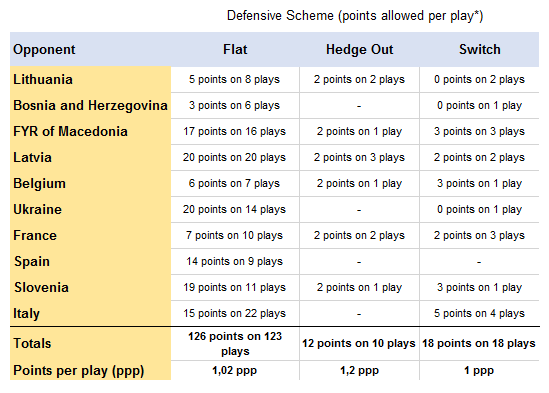
*play: a possession involving a pick and roll set defended by Krstic and ending with a shot, a turnover, a shooting foul, or a putback attempt.
My loyal readers (all three of them) will probably remember that measuring pick and roll defense is a tricky notion – the two man game is defended by at least two players. Therefore, blaming Krstic for all the baskets Serbia allowed on the plays recorded on this table would not be terribly accurate. However, these numbers demonstrate two significant challenges for Efes:
- Serbia had the fourth-worst defensive rating at the 2013 Eurobasket and some of their worst performances on that end of the floor (against Spain, Italy and Ukraine), coincided with their opponents attacking Krstic on the pick and roll.
- Krstic would find himself at the epicenter of such actions fifteen times per game. Hiding your center’s defensive deficiencies in the pick and roll era is extremely hard.
With that in mind, let’s see how Duda used the newest Efes center on pick and roll defense:
Flat defense
This was Serbia’s go to strategy with Krstic on the floor:
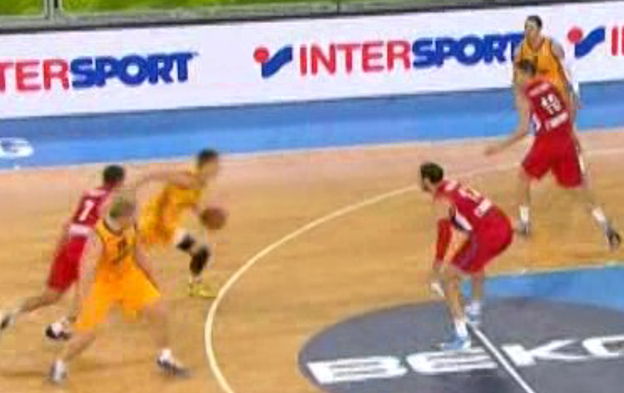
The Serbian center would drop back to the free throw line, with his teammate going over the screen. In theory, this is the best way to prevent opponents from exploiting Krstic’s limited mobility. In these situations big men are required to slow down the ball handler and get back to the roll man without having to cover a great distance. Ivkovic also likes this set up because it allows his team to keep defensive rotations at a minimum. And that’s a good thing according to the Efes coach, whose defensive philosophy can be explained by his criticism of pick and roll-heavy offensive playbooks:
Now we all play pick and rolls, usually as a two-man game. I’m afraid this strategy is ruining basketball. In pick and rolls there’s only one player passing. The other four are watching.
Notice how Duda says ‘we’. No coach can afford to ignore the advantages created by the pick and roll (bigs stepping out at the expense of rim protection, perimeter guys rotating at the expense of defensive balance). However, Ivkovic’s concern about the impact of such actions on ball movement also inform his defensive approach. His main goal is to isolate the ball handler from his teammates by taking away passing lanes toward the roll man and having the other three defenders stay home on shooters and cutters.
At 2013 Eurobasket Krstic often struggled to hold his end of the deal. In the picture above his angle is not ideal, as he doesn’t take away the driving lane to the left of the ball handler. His footwork does not allow him to make up for his poor initial positioning and Serbia concedes a close range attempt:
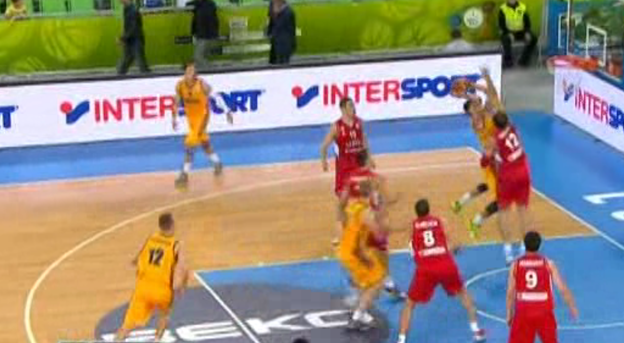
Of course not all is lost at this point. Krstic’s teammates have managed to take away all other options, which means that the Serbian center can focus on a traditional big man task: challenging a shot at the rim. Unfortunately, he is not very good at it either, even at games where Serbia’s defense was at its best. The table above indicates that Kristic’s defensive performance against Lithuania was one of his best at the tournament. However, Mantas Kalnietis was able to attack him in pick and roll actions during the fourth quarter. Krstic could not stop the Lithuanian guard outside the paint, nor significantly alter his shots at the rim. This sequence against Ukraine tells the same story: the high percentage shot missed, but it was the shot Serbia’s opponents wanted. This is why the play resulted in an offensive rebound and a putback, with Krstic out of the picture:
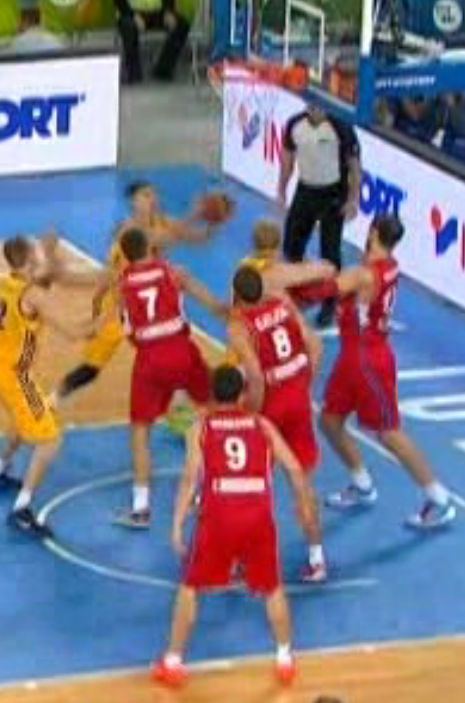
To sum up: Krstic doesn’t really stop the ball away from the basket and is not much of an intimidator inside. Therefore, a flat coverage can only work if the Efes guard defending the ball handler can go around a screen quick enough and/or if opponents are baited into taking low percentage mid-range jumpers off the dribble (hey, it could work against Keith Langford). But what happens if the ball handler is a dangerous shooter from beyond the arc?
Hedge out
It has already been mentioned how Ivkovic is not comfortable with extensive defensive rotations. But when the ball handler has no qualms about pulling up coming off the ball screen and is not explosive enough to make defenses pay for crowding him, it is worth deploying a more aggressive strategy: having your big man meet him at the three point line, with help defenders covering his back and the guard going over the screen:
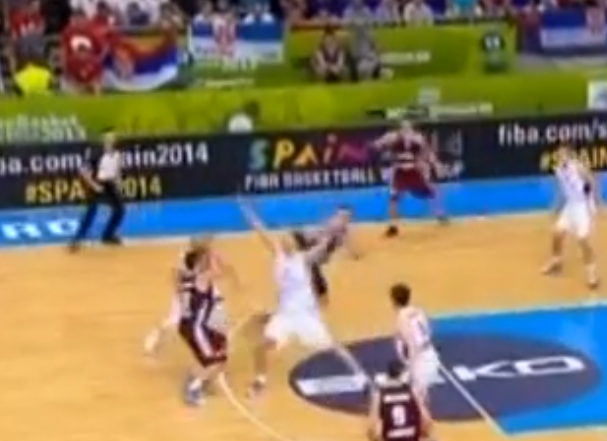
Again, Krstic displays poor positioning and anticipation, as he doesn’t push the ball handler away from the basket. His limited athleticism obviously plays a part, but doesn’t explain everything. Darjus Lavrinovic – not exactly the archetype of an athletic big man – demonstrates what Krstic does wrong:
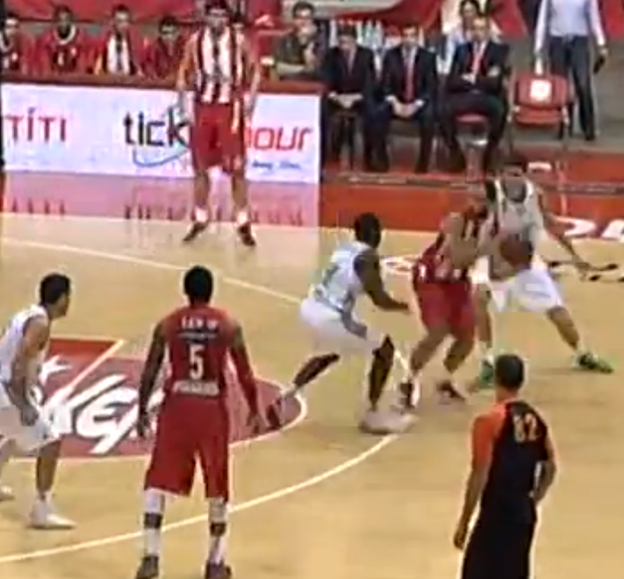
Unlike Lavrinovic, Krstic allows ball handlers to turn the corner coming off the ballscreen. This leaves him vulnerable to pocket passes toward the roll man and gives the opposing guard to split any double teams the defense might try. In other words, help defenders have to take on more responsibilities and act faster, as defense on the ball hardly slows down the offensive execution.
Switch
We don’t need a screenshot for this one: the big man steps out to play the ball handler one on one, while the defending guards fronts the roll man, denying an entry pass in the paint. Pretty straightforward stuff. Even though this strategy is usually reserved for more mobile centers, Duda had Krstic switch in late clock situations or when opponents run 4/5 pick and rolls, with the likes of Linas Kleiza and Luigi Datome handling the ball. This approach might throw opponents off and cause guards to overdribble – remember how Madrid struggled to make the correct reads against the switching Olympiacos defense? But it could also present an extra challenge for Efes as Kristic tends to lose guards once they pass the ball. Take this play, against Bo McCalebb:
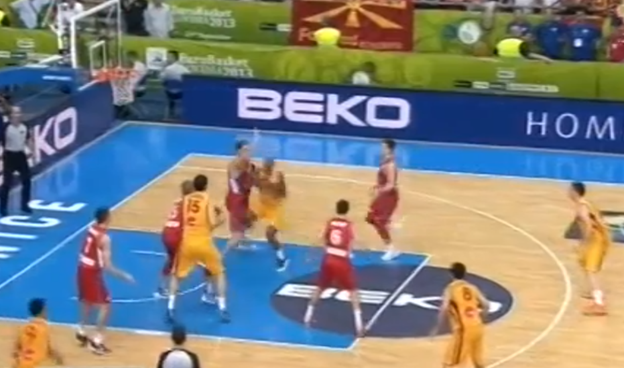
While you would probably expect Bo to blow right past Krstic on the switch, the Serbian center actually does a pretty good job of leading him toward the help. Once McCalebb gives up the ball however, Krstic gets lost in defensive no man’s land:
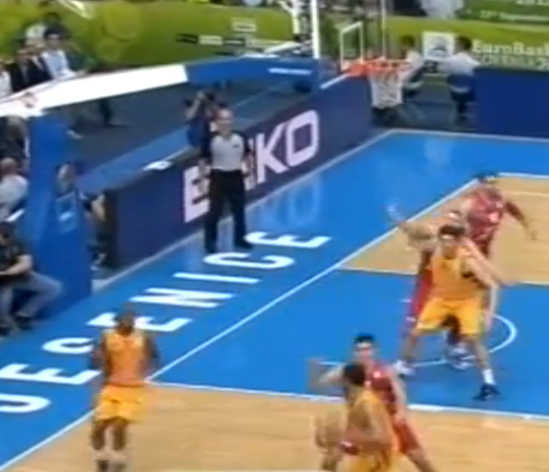
Bo makes it to the left corner, with Krstic drifting behind Vladimir Stimac on the low post. The open three dropped, as no Serbia player closes out on the shooter.
Changing the discussion
With Nemanja Bjelica the only conventional power forward in Serbia’s roster last summer, Ivkovic often deployed twin tower lineups: Krstic would share the frontcourt with fellow centers Djordje Gagic or Stimac. This would allow Duda to hide him as a help defender against pick and rolls. Could a similar strategy work at Efes?
Pairing Krstic with Stephane Lasme sounds promising. Both are productive as mid-range shooters, a skill which could help Efes deal with spacing issues of lineups that do not feature a stretch four. On the other end of the floor, Lasme is a trustworth pick and roll defender. However, the answer in not so simple. First of all Lasme is also moving past his prime and was extremely foul prone last season. Will Efes have enough depth to get away with playing their two main centers at the same time? Also, Krstic as a help defender is not exactly a safe bet:
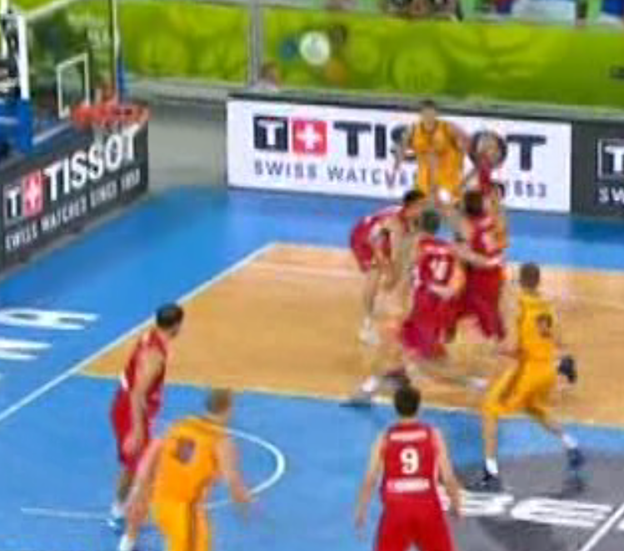
This is Krstic as power forward. His job on this play is to rotate toward the roll man if the ball handler finds him. Given the short distance it shouldn’t be a problem, right? All Krstic has to do is take a couple of steps to the left and raise his hands. Well, see for yourself:
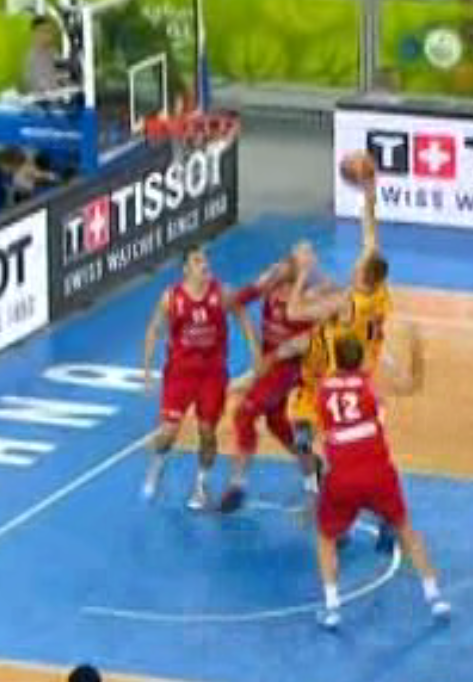
There is no type of pick and roll defense that allows a team to completely avoid rotations. Duda’s schemes are designed to have such rotations take place on his own terms – late on the shot clock and after his players have taken away most passing options. Still, rotations need to be executed properly. More often than not Krstic does not deliver.
Of course the Serbian center will have considerable help at Efes. Dontaye Draper and Dogus Balbay are excellent defenders on the ball, who could drastically reduce his own work load by recovering quickly after the screen has been set. Lasme is very useful as insurance policy. And help defenders can always make a difference. However, Duda has his work cut out for him. Efes spent a significant amount on a player who seems to be productive only on one side of the floor. And even though the Turkish club has money to spend, its resources are not limitless. One has to wonder whether the could get better value for the money. But right now that’s a rhetorical question. What matters more is how Ivkovic is going to find a way around all those defensive issues.
Pingback: HOOP365 World Cup Preview: Serbia